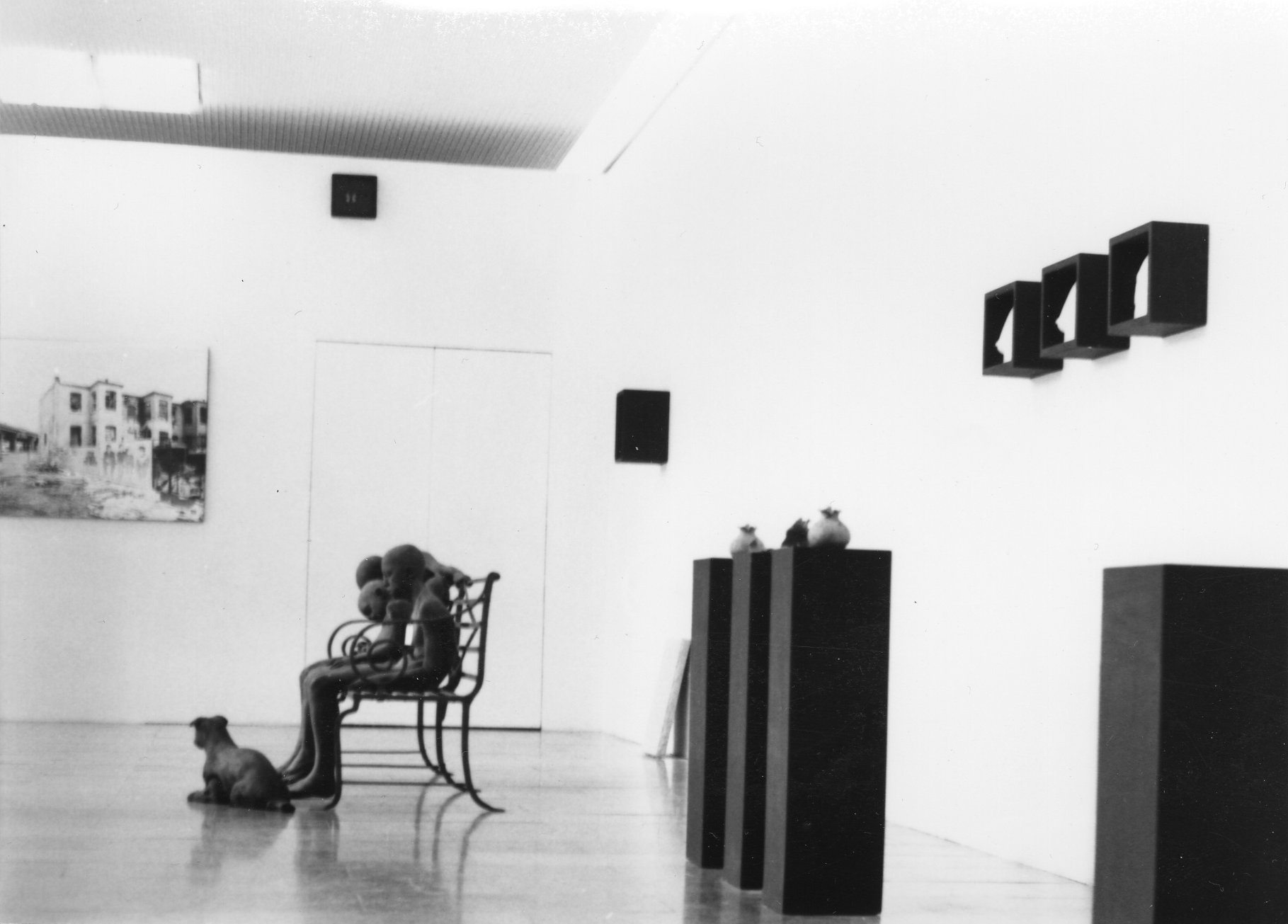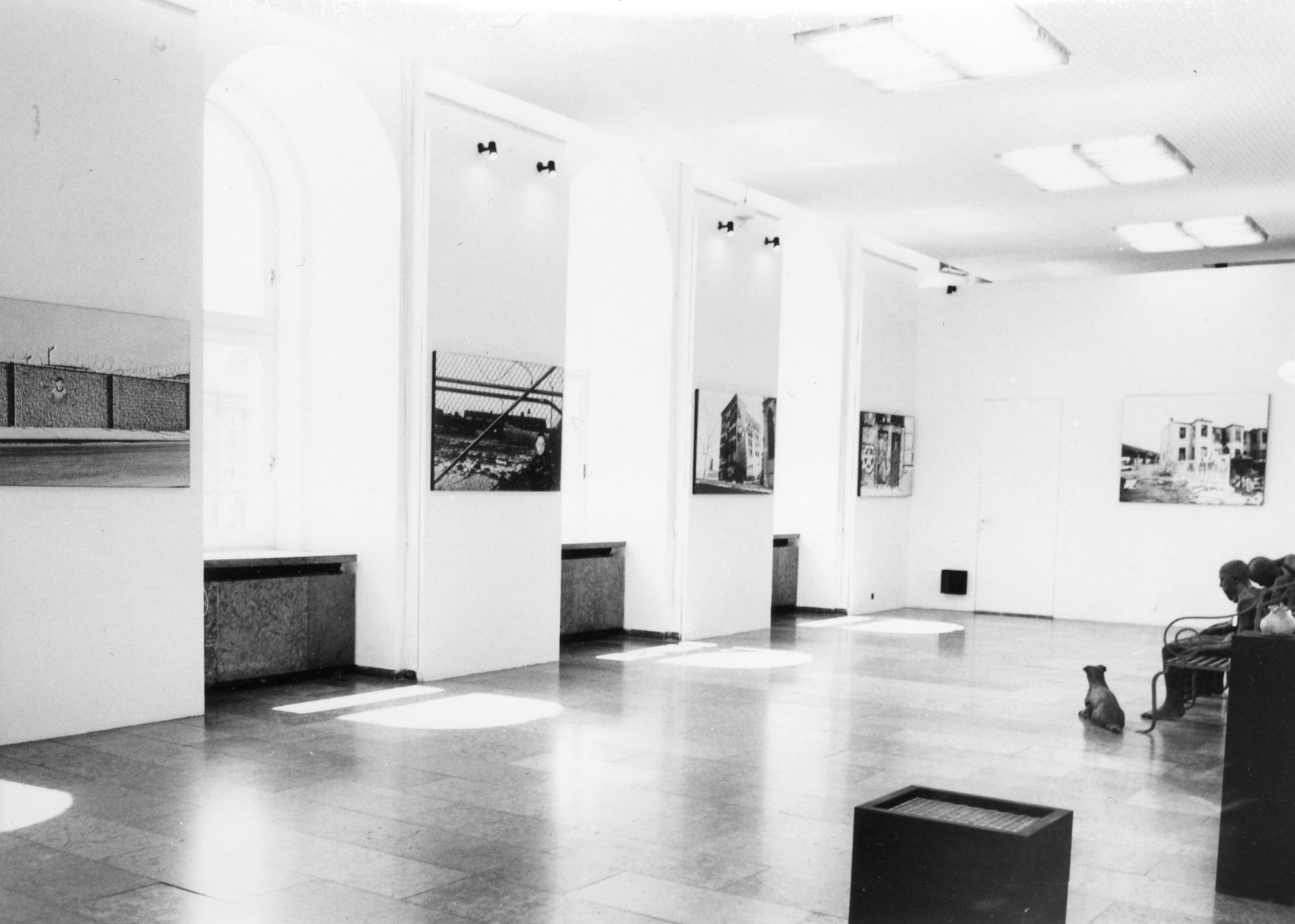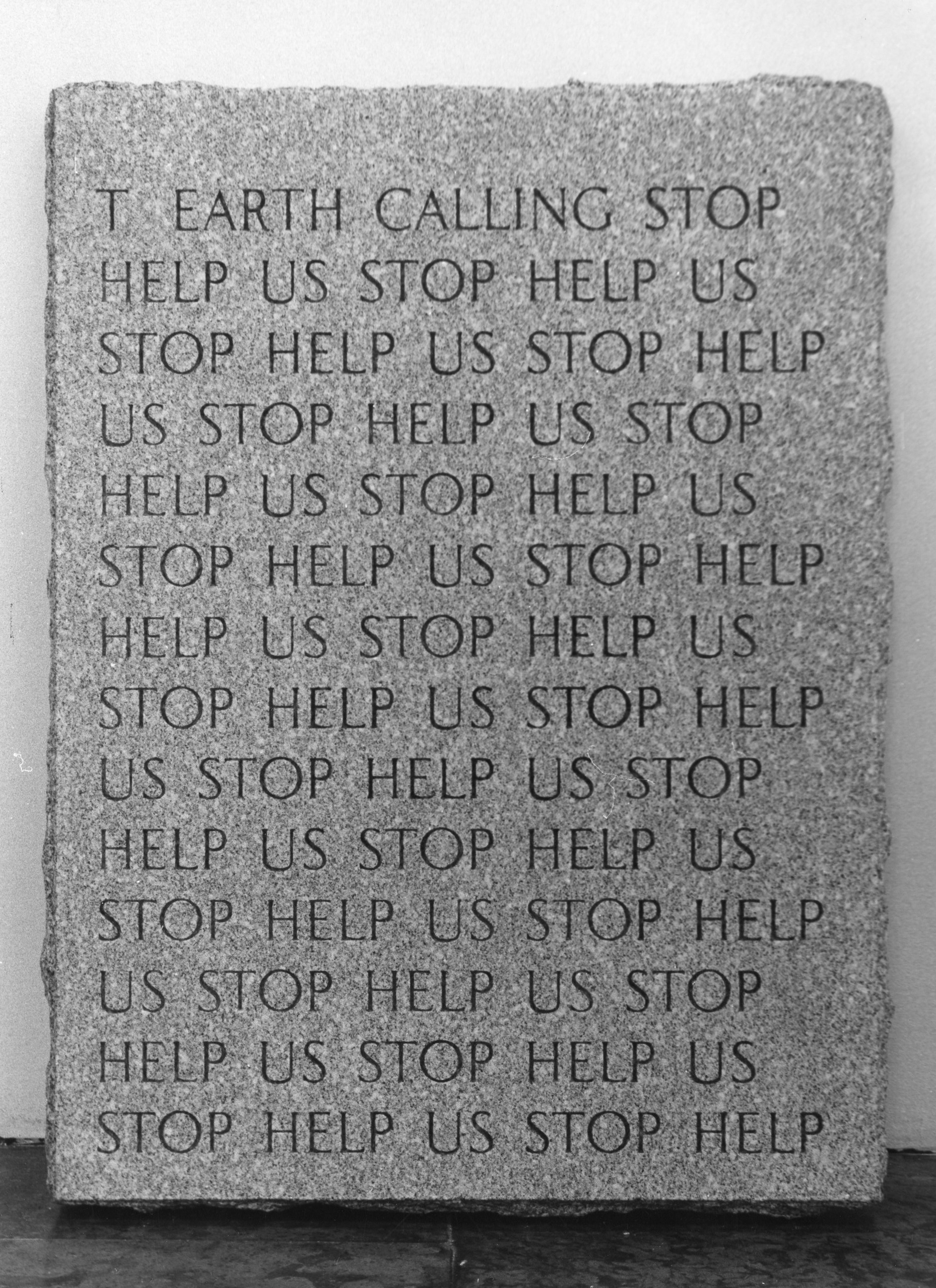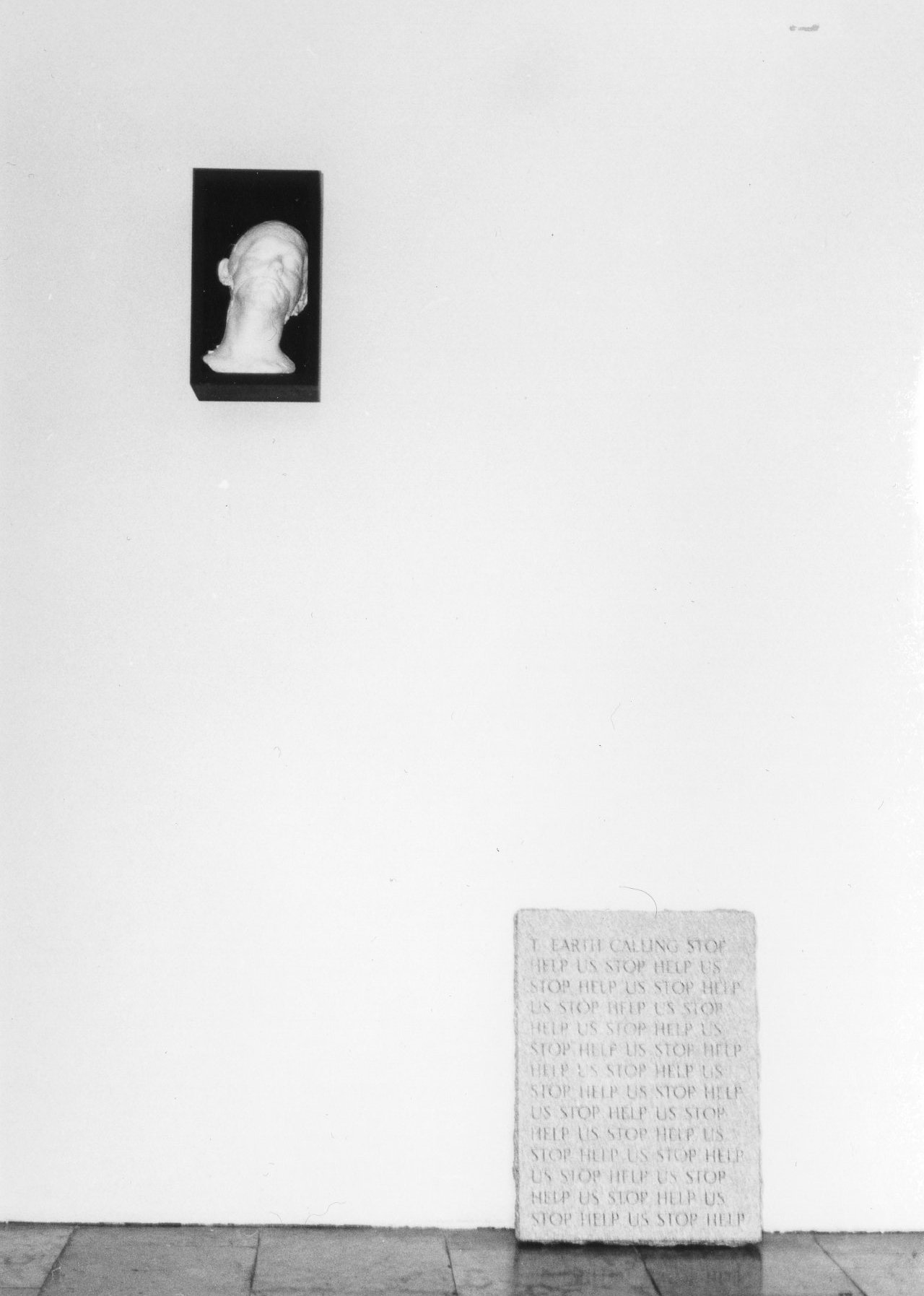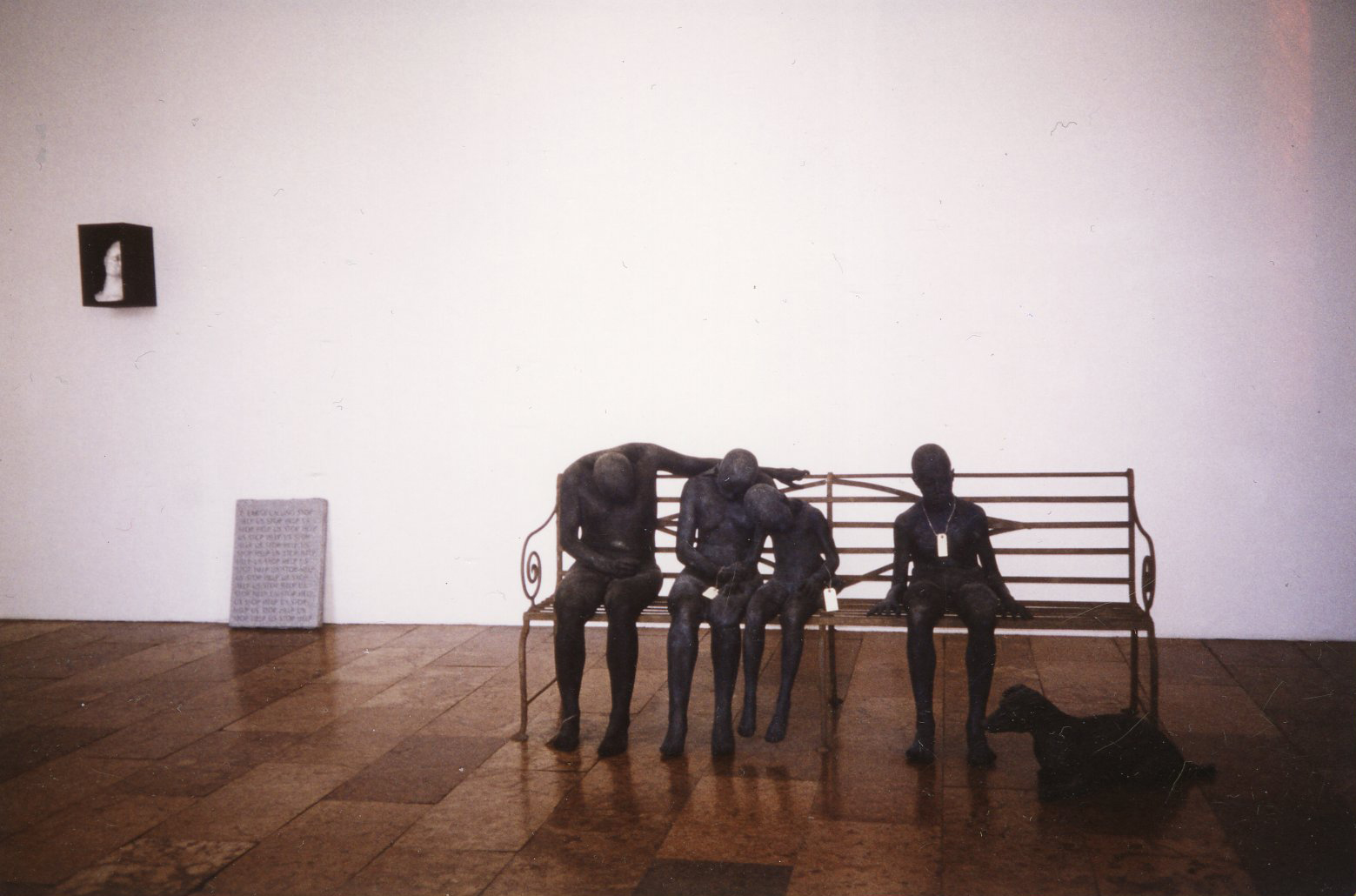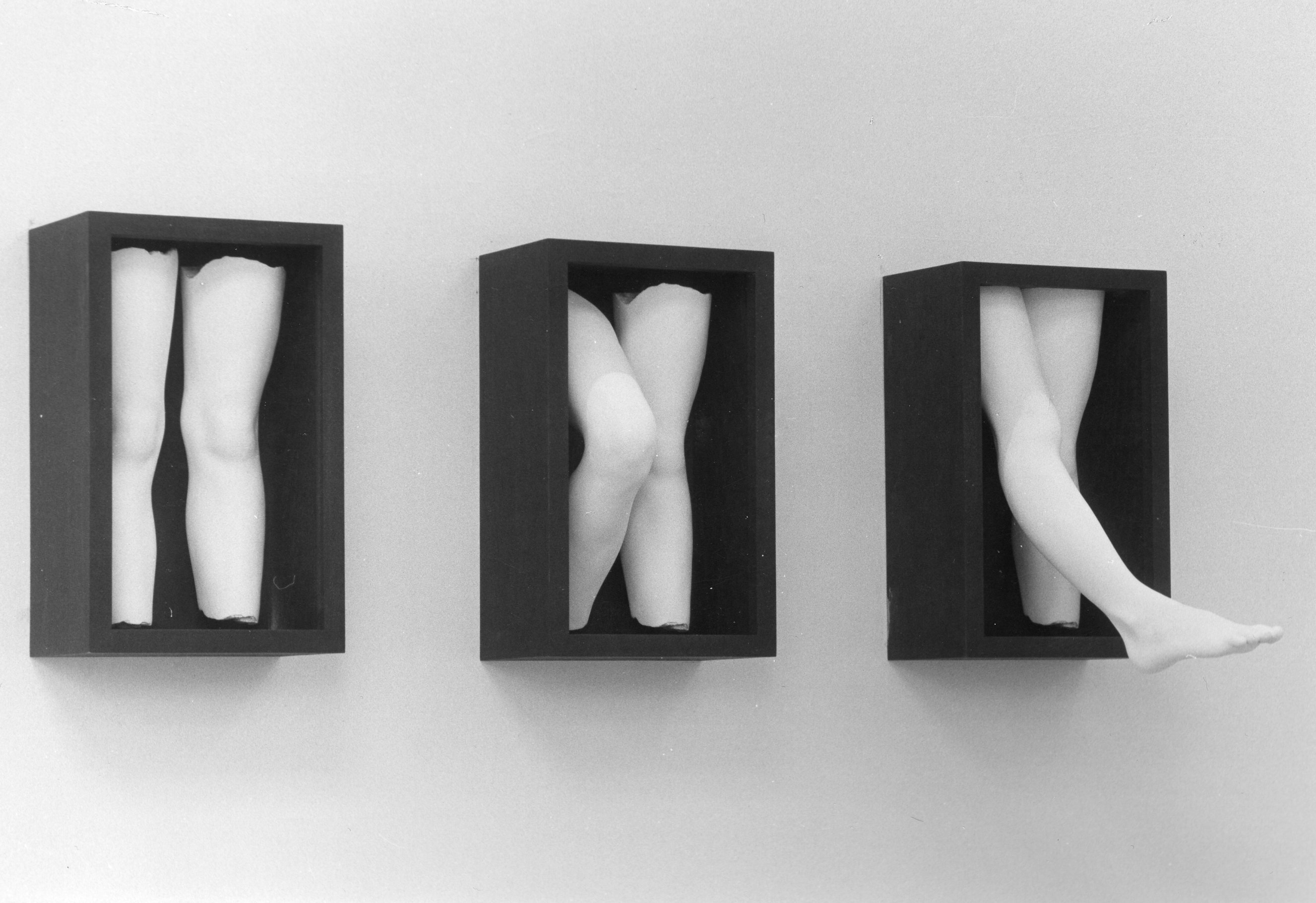Endangered Species: 2319–2322 by Yoko Ono, created in 1992, was first exhibited at Stiftung Starke, Berlin. The work consists of 22 pieces, its central motif being four bronze figures seated on a bench with a dog. Fragments of parts of the body (chest, foot, hand) made of plaster accompany these figures, a text engraved in granite, fragments of vases, as well as a framed photograph and six paintings. Yoko Ono became one of the idols of pop culture after her marriage to rock star John Lennon in 1968. This fact in itself blurred and retrospectively questioned the merit of her independent artistic activities, even though she had earned a reputation in the avant-garde art scene as one of the influential members of the Fluxus movement. Between 1960 and 1971 (when she abandoned artistic activities), she became successful as a performance artist; as a singer, composer, writer, and object artist. She created an array of significant and provocative artworks, in which the radical elements, the leit motif of the aesthetic avant-garde pertaining to the Fluxus movement, merged with the particular sensibility of the East. Her famous performances, focussing on silence and time, fundamentally differed in intention from that of John Cage who proved to be an influential source of inspiration for other Fluxus artists. Instead of the external world, she sought to direct attention to the inner silence and self-attainment. In this respect, her approach bore a closer relationship to meditation, as practised in Zen Buddhism. Ono’s visual artworks of the time were also conceptual in nature, counting on the spectators’ engagement and constructive imagination. In 1966, Ono participated in the Destruction in Art Symposium, held in London, where she also organised numerous performances. After the conference she chose to stay in the city, where she was accredited the title of “The Great Priestess of Happening” by the press. In 1988–89, she reconstructed her renown objects of the 1960’s (Apple, Painting to Hammer a Nail, Chess, Four Spoons, Key to Open the Sky, etc.) in bronze, presented at the Whitney Museum of American Art in New York for the occasion of a retrospective screening of her films.

